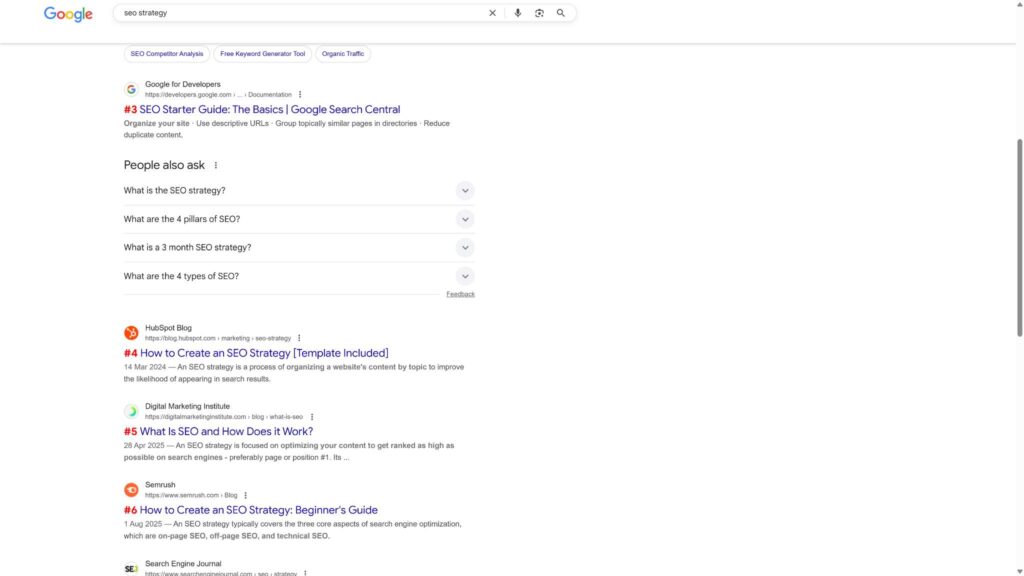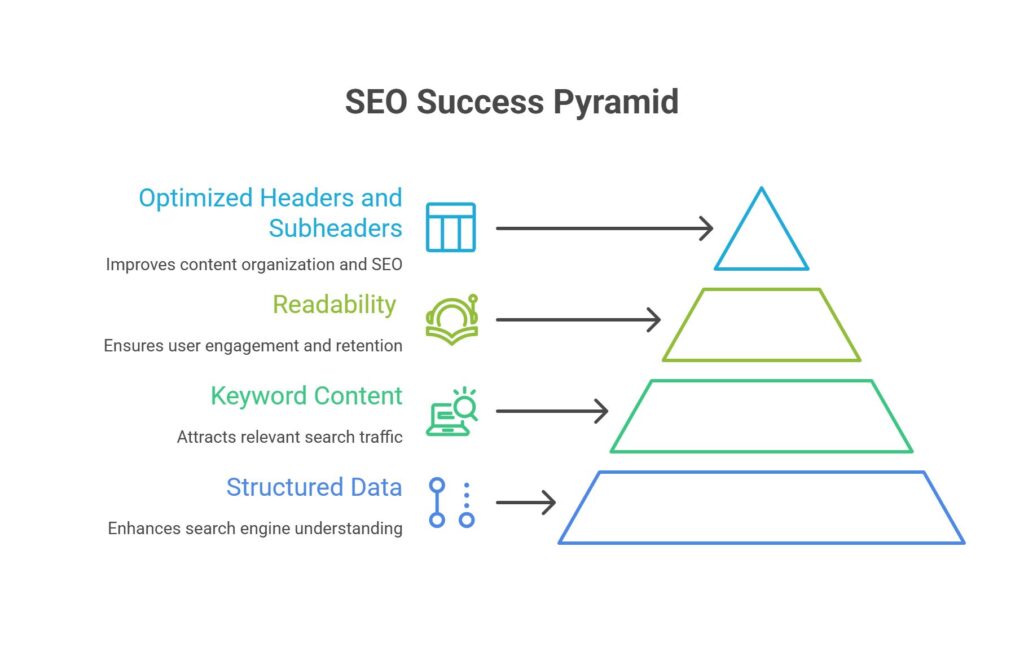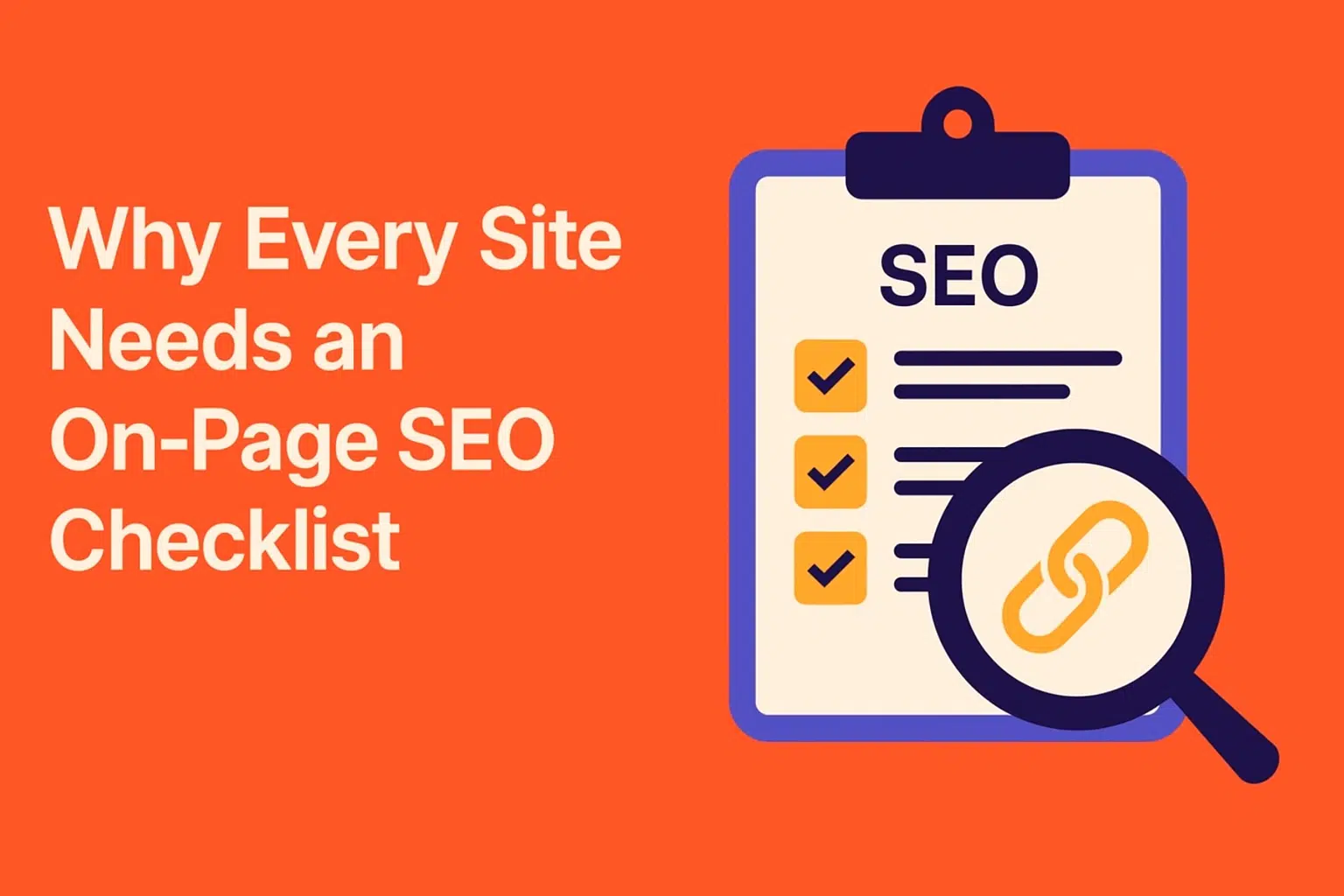This article is created for anyone looking to strengthen their website’s performance through clear, effective on page SEO practices. Readers will find useful information and well examples that address both fundamental and advanced topics in this checklist. In today’s crowded online market, ensuring that every page is optimized can mean the difference between remaining invisible or achieving lasting online success.
This guide covers the important parts that form an on page SEO checklist. It introduces key concepts, highlights vital factors, and explains the techniques required for future SEO success, giving you the clarity needed to apply these methods well.
What is an On Page SEO Checklist?
An on page SEO checklist is an organized list that helps website owners optimize individual pages for search engines. It outlines techniques, factors, and best practices to improve ranking, enhance user experience, and meet search intent. Additionally, this checklist works as a complete tool to make sure every page remains properly optimized while helping you with the necessary updates and refinements.
Why on page SEO matters for your site
On page SEO affects how search engines and users view your website. It improves visibility, brings valuable visitors, and supports trust. Improving title tags, meta descriptions, and content structure shows importance to search engines while focusing on user queries naturally. By focusing on user intent and balancing immediate adjustments and long-term strategy, on page SEO can boost click-through rates and lower bounce rates. It aligns with search engine algorithms that favor clear, keyword-rich content. Effective on page optimization also influences indexing speed and overall site performance. Maintaining this discipline helps higher rankings and a better user experience, which consequently helps convert visitors into loyal customers across all devices consistently.
“On-page SEO is the foundation for every website. If search engines can’t understand your content, no amount of off-page SEO will help you.”
Brian Dean, Backlinko
Core elements every checklist must include
Every on page SEO checklist should cover title tags, meta descriptions, URL optimization, header tags, and image alt attributes to create a strong structure. Including keyword research, content quality, and internal linking strategies ensures complete improvement while building a strong base for your site. This list also includes mobile friendliness, page speed metrics, and structured data. Techniques like proper schema markup, core web vital tracking, and the use of natural language improve importance. A comprehensive checklist guides updates and maintenance, confirms the design of the best user experience, and maintains alignment with search engine guidelines. By minimizing errors and increasing page performance, you can reach higher rankings and improved visitor engagement across every platform.
Difference between on page and off page SEO
On page SEO deals with optimizing elements within your website, including content, meta data, and code structure, while off page SEO builds site authority through external signals like backlinks and social shares. On page efforts support immediate user experience and clearly mark relevance for search engines. On the other hand, off page techniques revolve around acquiring trust and being liked from other sites. Both strategies serve separate purposes: one governs the content you control while the other boosts your website’s trust outside. Mixing these approaches is needed for overall search success and a balanced digital presence that connects with changing online market dynamics.
Key On Page SEO Factors to Focus On
Key on page SEO factors include improving meta tags, content, URLs, images, and internal links, all of which impact search engine ranking and user experience. Paying attention to mobile response and page speed improves performance. Focusing on these elements helps you create an SEO strategy that builds organic traffic and increases user engagement effectively on different devices.
Title tags and meta descriptions

Title tags and meta descriptions are the foundation of on page optimization. They provide concise insights about your content and influence click-through rates from search results. Write engaging, keyword-rich titles and clear meta descriptions that match user intent. Make sure title tags remain around 60 characters and meta descriptions under 120 characters to avoid truncation. Properly improved meta data indicates relevance and can not directly impact rankings, improving overall search performance well.
URL structures and internal linking
URL structures and internal linking help site navigation and SEO by organizing your content sensibly. Clean, keyword-embedded URLs aid both search engines and users in understanding the page context. Also, internal links help spread link equity, boost indexing, and encourage users to view related topics. Use descriptive anchor text along with a logical order to strengthen internal linking efforts. A logical URL design combined with effective linking practices helps greatly to improved ranking and site usability. This strategy increases greater engagement and organic growth in competitive markets.
Image optimization tips for better rankings
Image improvement improves user experience and site speed, both of which are key ranking factors. Compress images using efficient tools, use descriptive file names, and include alt text containing relevant keywords. Using modern formats like WebP and dynamic resizing tools will help load your images faster. Optimized images reduce bounce rates while improving stronger overall SEO. Using these tips improves visibility on image search and rich results, which ultimately boosts ranking performance and user retention across platforms.
Importance of mobile friendliness and page speed
Mobile friendliness and page speed are important for maintaining users engaged and search engines satisfied. Fast, responsive designs lower bounce rates and improve overall ranking a lot. Optimize visual elements, use caching solutions, and review your hosting settings to increase speed. Using mobile-first design along with faster methods like AMP increases performance on different devices. This two-part approach earns higher user satisfaction and better rankings, since search engines prioritize fast, mobile-friendly experiences. Maintaining optimal performance consistently brings more visitors.
Best On Page SEO Techniques for 2025
Effective on page SEO techniques increase visibility and engagement while preparing your site for future trends. Use structured data, create keyword-rich content, and improve headings to show search intent naturally. Avoid keyword stuffing by using natural language sprinkled with diverse synonyms. These techniques not only prepare your site for evolving search algorithms but also ensure that your content connects well with both users and search engines.

Using structured data to improve visibility
Structured data organizes your page content in a way that helps search engines understand it better. Using JSON-LD and Schema.org markups can improve the appearance of rich snippets, which increases exposure. This method improves click-through rates by presenting detailed information in search results and helps voice and visual search improvement. Clear, accurate markup creates credibility with users and search engines alike, showing an up-to-date SEO strategy [Search Engine Land]. This approach increases enhanced online brand awareness worldwide.
Creating valuable, keyword-rich content
Quality content that addresses user queries and joins primary and related keywords is crucial. Research keywords thoroughly and write interesting articles that include detailed details with engaging storytelling. Use natural language while incorporating varied keyword forms to prevent overuse. Valuable content builds authority, satisfies search intent, and retains visitors for longer periods. This thoughtful method not only boosts rankings but also encourages repeat traffic. Use analytics to regularly refine and improve your content while staying true to the essence of your brand’s voice.
Avoiding keyword stuffing and improving readability
Prevent keyword stuffing by including keywords naturally within high-quality, easy-to-read content. Keep balance between following search engine guidelines and keeping your readers engaged. Use synonyms, long-tail variations, and related terms wisely to improve meaning. By putting first clarity over forced repetition, your content becomes more easy to read and lowers the chance of high bounce rates. This strategy not only enhances readability but also follows modern SEO standards, resulting in higher user satisfaction and better organic rankings. A clear, inviting copy is important for long-term success in the online world.
Optimizing HTML headers and subheaders with keywords
HTML headers and subheaders organize your content and help readers and search engines. Include targeted keywords naturally within header tags to show the importance of your content. Use clear H1 tags and supporting H2-H6 tags that provide structure and improve readability. Properly structured headers help readers when scanning content and improve search results. This method creates a natural progression that aligns with user queries and search intent smoothly. An effective header strategy improves better rankings regularly, supporting long-term digital success.
Conclusion
An effective on page SEO checklist is important to improve a website’s performance and increase natural traffic. It serves as a guide, ensuring every page is optimized for both user experience and search engine relevance. By following key factors and techniques—from creating compelling meta data to adding structured data—website owners can get improved rankings and higher engagement levels. This complete checklist helps you to address both technical and creative aspects of SEO, laying a solid foundation for long-term growth. Keeping content fresh, readable, and aligned with user intent gives you an advantage. Regularly updating the checklist helps you remain in front of algorithm changes and market trends. In the end, a strong on page SEO strategy lays the foundation for lasting digital success and lasting growth. Invest in occasional audits to keep your SEO efforts both effective and current.
FAQs
What are the most critical on page SEO factors for 2025?
How do on page SEO techniques improve search rankings?
Is there a complete SEO checklist that includes off page factors too?
What are the best on page SEO practices for beginners?
Can I automate any parts of an on page SEO checklist tasks?
How often should I update my on page SEO checklist?

Ridam Khare is an SEO strategist with 7+ years of experience specializing in AI-driven content creation. He helps businesses scale high-quality blogs that rank, engage, and convert.



